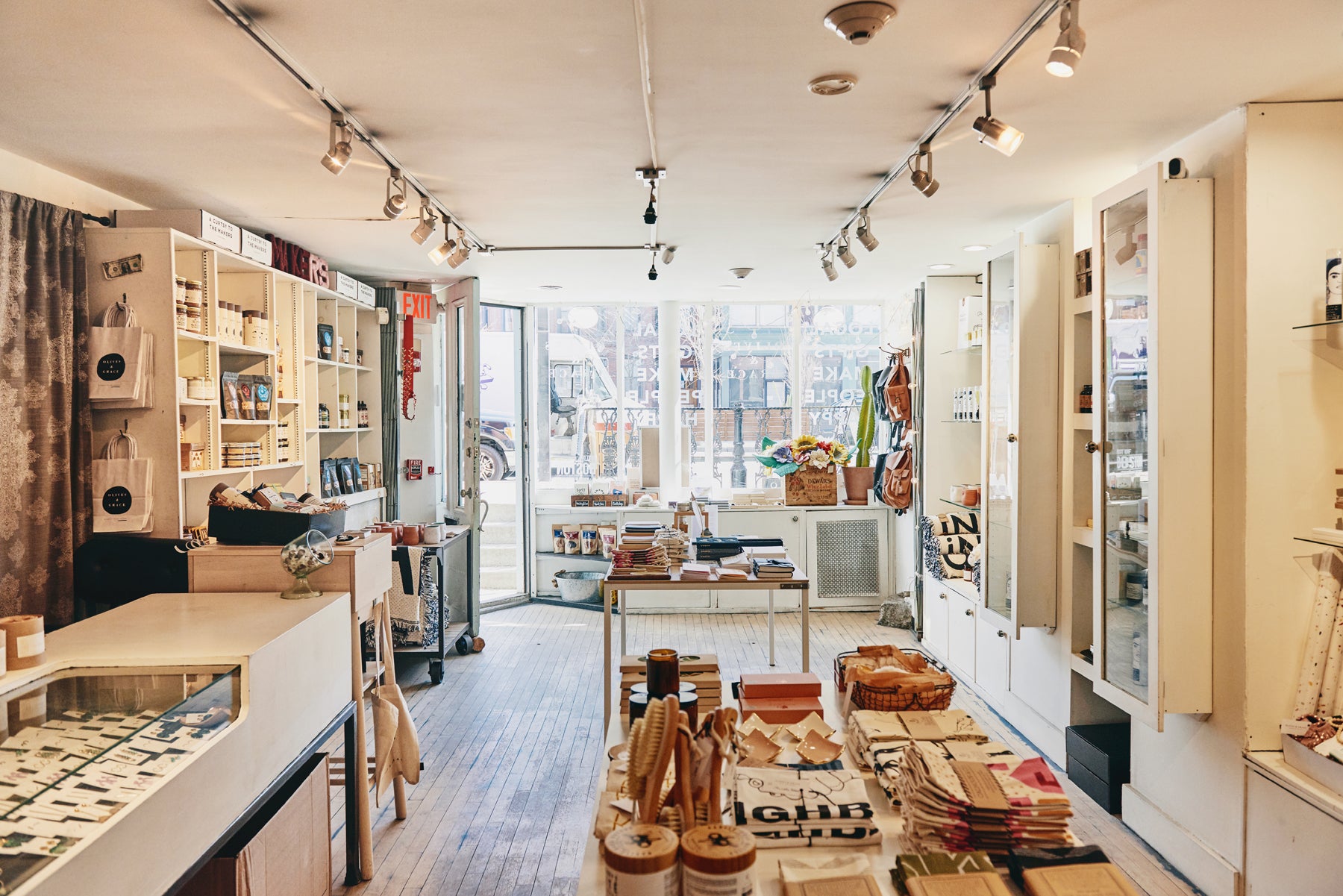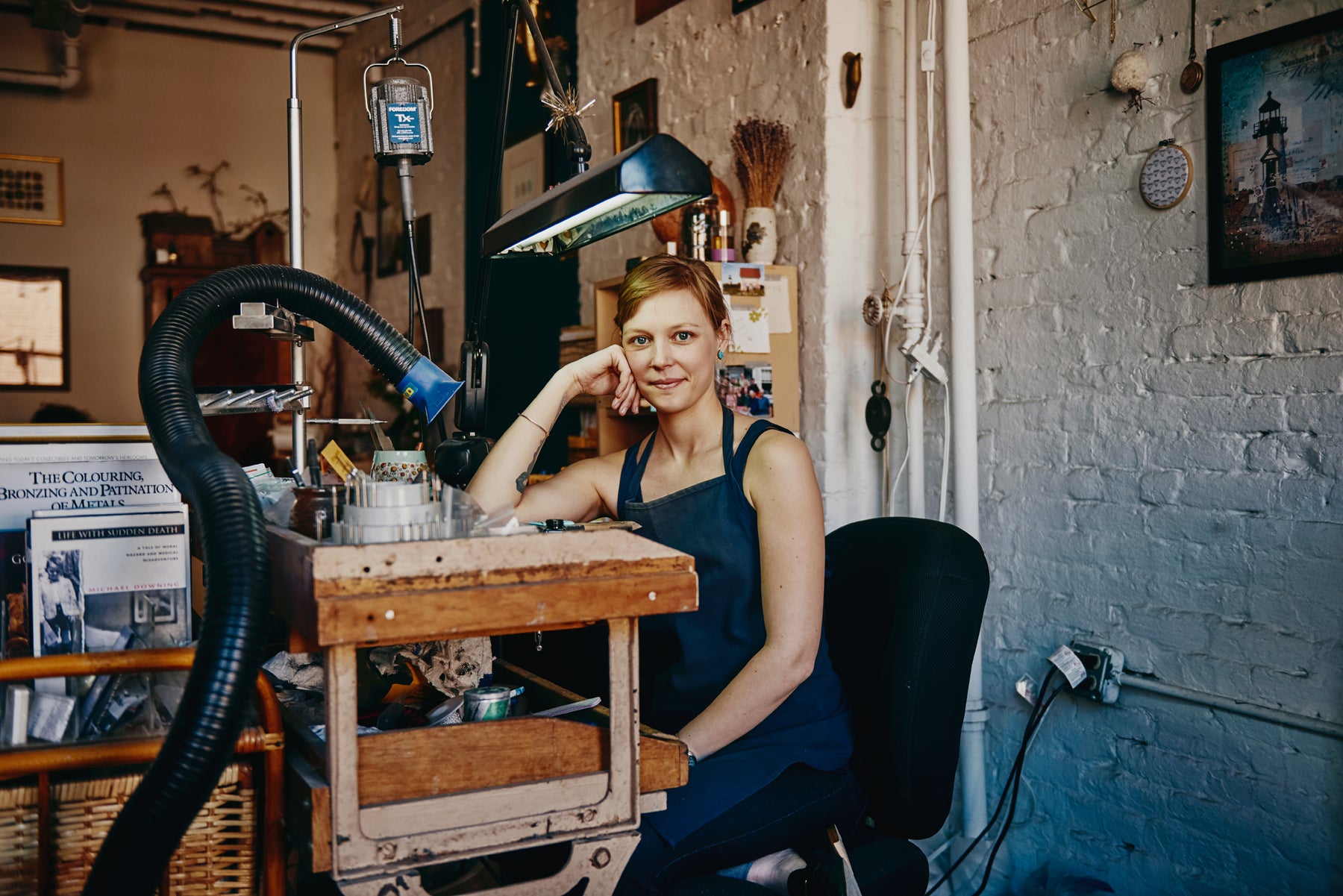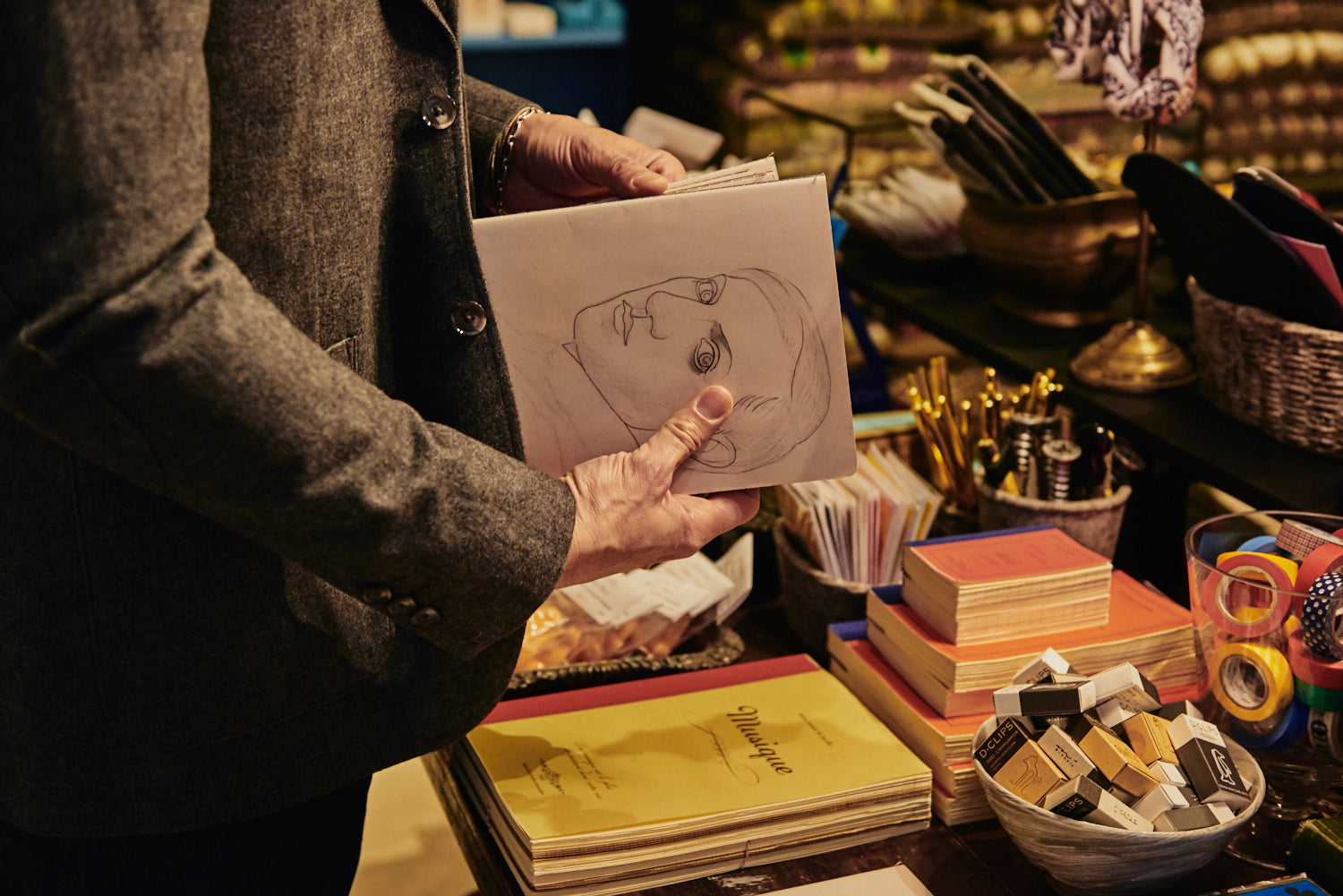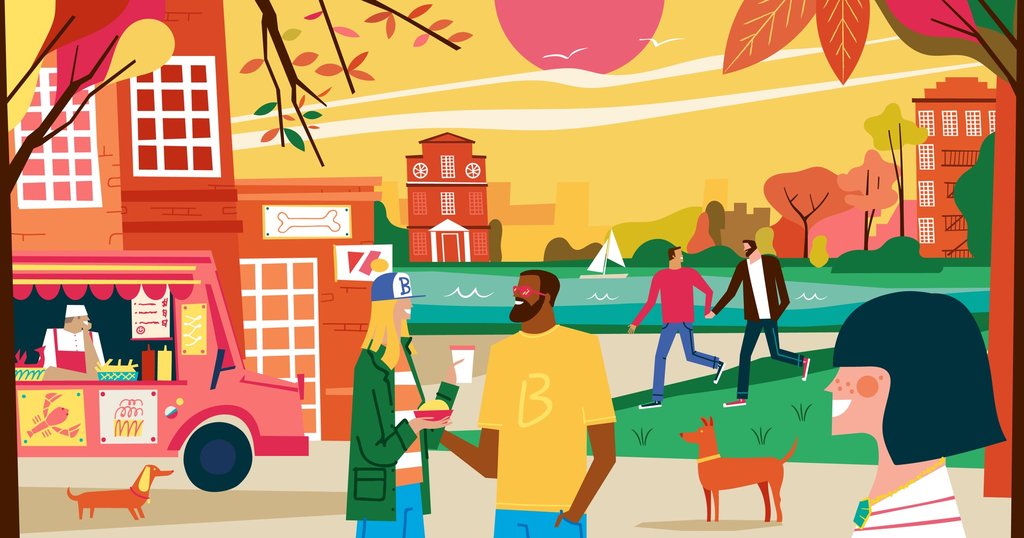You’re here to cheer the Sox or conquer the 26 miles of pavement alongside 30,000 of your closest running buddies. Or maybe you came for the lobster roll. Beyond clichés and tourist traps, though, every city has a special hidden identity. Boston is no exception. Its storied history—think Wahlberg brothers, molasses floods and the Curse of the Bambino—is preserved in the details, even as the city evolves. Or, better put by Polkadog Bakery co-owner Deb Suchman, “Boston is a collaboration of new and old communities built on a gritty, sturdy structure.”
One of those communities is South End, an arts-centric borough with foodie leanings and disputed borders. Here, historic brownstones stand at attention along manicured streets, where without any clear delineation between commercial and residential spaces, homes are dotted with flower shops, juice bars, and luxury boutiques, occasionally interrupted by immaculate park spaces.

South End, despite its evolution into a shopping destination, has largely retained its independent roots. Sure, Starbucks is grinding beans every other block, but the smaller leasable spaces have helped keep big box brands at bay. Because the retail isn’t concentrated in South End, discovery is part of its charm. And business owners pool their money, says PATCH NYC co-owner John Ross, to create a map to help visitors easily find the area’s hidden gems—some, like his, secreted away down alleys or tucked into residential streets.
I zigzagged through South End, from Columbus and Massachusetts to SoWa (South of Washington) Open Market, interviewing people behind nine local businesses—dog bakeries and shoe manufacturers and pattern designers alike—to uncover what makes this tiny pocket of Boston unique.
Fighting spirit
Boston is a shoe town, says Mark McGarry, one-third of the founding team behind York Athletics Mfg. The brand, whose showroom sits in an industrial building on the fringe of South End, is a relative newcomer in a city that’s already home to the HQs of massive established brands. Think Converse, Reebok, Nike. Though York is just two years young, it’s actually the third iteration of a family sporting business dating back to 1946. Mark was a competitive snowboarder and finally head of footwear for Puma before he partnered with brothers and company heirs Travis and Kyle York to launch the brand. “I think most people relate to being an underdog,” he says. “That’s really what we represent.” Their little guy status worked in their favor, garnering press for their “audacity” to go head to head with the likes of Nike.
Boston has this ‘Boston Strong’ mentality so I think that messaging really resonated.
York leaned into Boston’s fighting-spirit identity to build local support, but they now ship sneakers around the world. “Boston has this ‘Boston Strong’ mentality, so I think that messaging really resonated,” Mark says.
Despite the weather...
Sofi Madison’s favorite childhood game was playing store. “I got a cash register when I was younger,” she says. “Like a real one.” Ultimately becoming a business owner, then, was a natural evolution. It was where she opened shop that surprised her. Boston-born Sofi left the city as a young adult, vowing to never come back. “The weather’s terrible,” she explains. But eventually she settled back in, opening Olives & Grace—a curated gift and lifestyle shop—and found a supportive community. “It’s like all entrepreneurs,” she says. “We all know each other.”

In the thoughtfully merchandised space, designer backgammon and gourmet caramels and handwoven baskets (oh my!) line tidy white shelves. Sofi leans toward small brands and handmade goods, supporting other small businesses like her own. There are enough stores covering Boston pride, she says, and her collection isn’t especially local. But she takes obvious care in discovering special pieces—like blankets woven by traditional artisans in Mexico—and sharing them with her hometown.

Leave your humans at the door
Fresh out of art school, Deb Suchman moved into a South End live/work loft during its burgeoning arts scene in the late ’90s. “I bought in,” Deb says. “I was part of something new, and also part of something old and real.” The idea of a dog bakery, inspired by her one-eyed rescue dog Pearl, was only meant to be an art installation. But people loved it. And they wanted more.
We set up the store to feel sort of like a penny candy store, but for dogs and cats.
Just months later, she and business partner Rob Van Sickle, opened the first location of Polkadog Bakery, where today jars line a long glass counter, housing canine (and feline) treats like cod skins, chicken strips, and “Lucky Duck” bits. The business is now in its 17th year with five Massachusetts storefronts. “We set up the store to feel sort of like a penny candy store, but for dogs and cats,” Deb says.
Boston proud
Occupying a nook along Tremont is SAULT, a menswear shop founded by Philip Saul to celebrate his love of classic and emerging New England fashion. Inside, the below-grade space, decked in nautical blues, driftwood, and shots of red, feels like a ship’s hull.
Though it’s clearly a shop that’s all about New England, there’s nothing touristy or kitschy about it. Philip’s expertly curated collection—from chambray shirts and salted caramels to Cape Cod architecture coffee table books and Maine lobster kits—appeals to the discerning urban seafarer. Or tourists looking for more than a fridge magnet.
Playing with fire
Hannah Blount, a Nantucket native raised by a fisherman and a seamstress, has been making jewelry since she was 6 years old. “My parents both worked like mad to try to put food in our mouths,” she says of her family of nine. “It was up to us to entertain ourselves.” After college, she worked for other jewelers by day, while building up her own name with the ultimate goal: her own studio. “I was working like 100-hour weeks,” she says. Eventually, she took over a lease in the coveted SoWa Artists’ Guild building dedicated entirely to creatives. SoWa is a hub for small businesses in the summer, when every weekend, vintage, food, and arts markets fill the public spaces. “Boston has a lot of opportunity for artists,” says Hannah.
I’m getting my hands dirty, I’m playing with fire, and I wear an apron that’s covered in soot.

Though she’s at the helm and holds strong to the hands-on aspects of the business, Hannah still spends as much time as possible on the bench. “I’m getting my hands dirty, I’m playing with fire, and I wear an apron that’s covered in soot,” she says. In her third studio in the same building, Hannah and a team design and make fine jewelry “for the modern storyteller” sold at boutiques, online, and through custom requests.


Feathered tutus
Founder Jasmine Punzalan opened children’s boutique Kodomo in 2016 after struggling to find unique clothing for her own kids. She now operates three locations in Boston, bringing in over 20 apparel brands, mainly from Scandinavia and Spain. The cheery modern store is full of things I want in my size—trapezoid and daisy-shaped sunnies, colorblock knit skirts, and feathered tutus.
Kodomo employee, Nick notes that South End “has a New York feel but that it’s not a walking city.” Luckily, I’m on Tremont, South End’s main drag, and there’s plenty to discover within a few short blocks. It wasn’t always this way.
Small town vibes
Marie Corcoran, who has operated shops in this area for more than a decade, has seen the neighborhood bloom thanks to small business and historical preservation. “Back in the ’80s,” she says, “people were giving away the spaces, and it was impossible to sell.”
Marie, who loves the small-town feel of the area, bet early on the up-and-coming neighborhood. And she won.
Back in the ’80s, people were giving away the spaces and it was impossible to sell.
The bright green door of Marie’s 11-year-old shop, GiFtED, is hidden around the corner from the main drag. Inside, the space is crammed with color and whimsy, much of it handmade. As a new mom and full-time shop owner, Marie scarcely finds time to connect with her own maker roots, but reminds herself that her efforts give more than 90 other U.S.-based artists a platform for their work.
Classic architecture and ginkgo trees
Tremont uncovers yet another gem in Flores Mantilla, the second location for Colombian florist and former pastry chef, Nancy Mantilla. From the shop’s door, lush greenery—herbs, succulents, seasonal flowers—spills up the steps and onto the sidewalk, and inside, colorful blooms line the space, offering “something for everyone.” The shop’s strength, Nancy says, is her attention to detail and warm customer service.
Since living in Boston as a student, Nancy fell in love with South End’s classic architecture and ginkgo trees. It was always her dream to open a shop here. And, 17 years after opening her first shop in Marblehead, Massachusetts—currently staffed by her springer spaniel greeters, Señor Wellington and Belladonna—she did just that.
A new New York
For Boston newbies , owners of design studio and boutique PATCH NYC, South End is what New York’s West Village used to be—before John says it started to feel “like a mall.” Their business was already 10 years old in 2012 when they packed up and moved it to Boston (incidentally Don’s hometown). “We were burned out on New York,” says John.
It’s a different shopper than New York. I feel like they really appreciate what we’re doing.
PATCH NYC had its beginnings nearly two decades ago with crocheted hats—a variation on a design by Don’s mother. But Don and John had their big break after landing Barney’s and Bergdorf’s as clients. Since then, the brand has expanded to homewares, fine jewelry, original art, and partnerships with large global brands like West Elm, Monoprix, and Target.



PATCH NYC was my last stop, and aside from a zucchini pad thai at PRESSED and a soy latte at Jaho, I hadn’t eaten enough to balance out the walking. Luckily, the collab map designed by local shop owners included South End’s best eateries. “Boston has such a good culinary scene,” John tells me, and circles his favorites.
I rounded out my first stay in this city checking off the must-do list, including, yes, a game at Fenway (they won!). But my exploration down brownstone-lined rabbit holes let me see another side of Boston—one just as proud of its history as it builds its future.
Feature image by Verónica Grech
